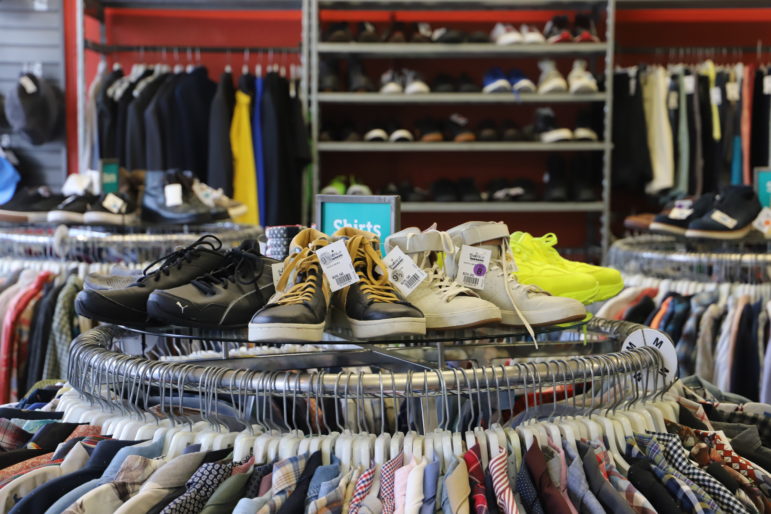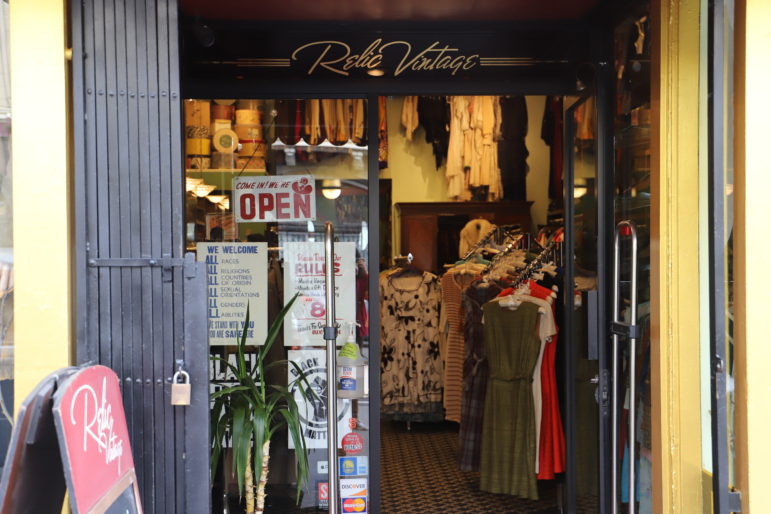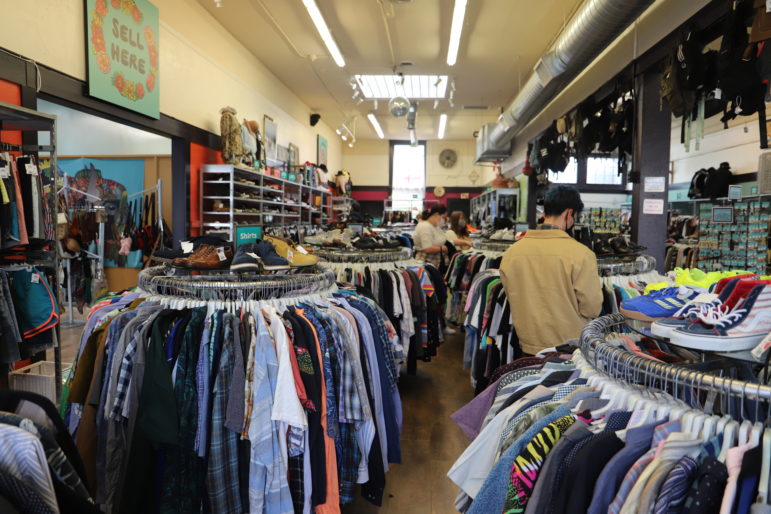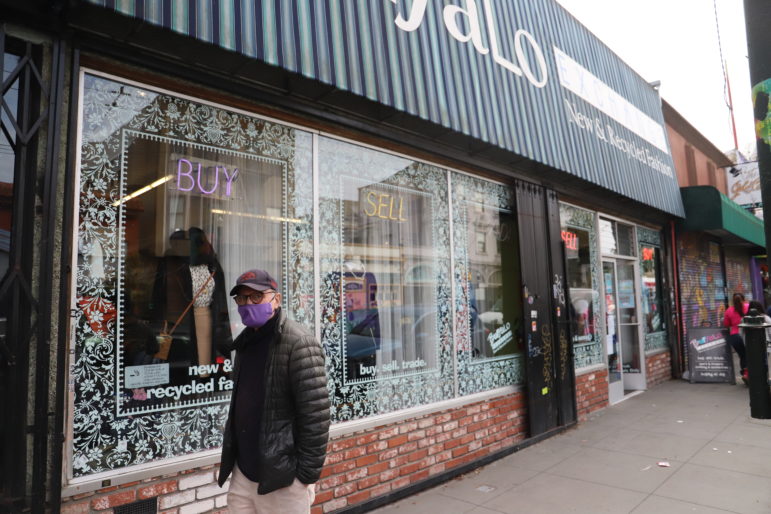

Two centuries ago, each piece of clothing was indispensable. People crafted clothing to be long-lasting and durable. But following the mass production of clothing in the 20th century, new ways to efficiently produce clothing in large quantities led to more accessible, affordable and short-lived clothing.
“The more affordable it became to buy new clothes, the more people thought of clothes as disposable,” wrote Olivia Waxman in Time.
Manufacturing new clothes uses up resources and energy while polluting the environment. According to the World Resource Institute, making a new pair of jeans adds as many greenhouse gases to the atmosphere as driving a car over 80 miles. In 2018, 17 million tons of textile waste went into the landfills, reported the Environmental Protection Agency. This represented 5.8% of the waste added to landfills that year.
However in recent years, thrifting has become more mainstream and people have taken to shopping at stores which offer secondhand clothing. Shoppers who’ve taken advantage of this environmentally friendly alternative have dubbed the activity “thrifting.”

Its recent rise in popularity is greatly due to social media. Senior Ella Bartlett describes what motivated her to start purchasing more secondhand clothing.
“When I was younger, I didn’t thrift as much,” Bartlett said. “Social media had a huge impact on getting people out to go thrift. You see videos on TikTok [of people showing] ‘what [they] got today thrifting.’ … Just seeing people on social media [thrifting] more … inspired me to do it.”

Junior Arissa Low first heard about thrifting from internet personality Emma Chamberlain on YouTube. In several of her videos, Chamberlain displays the uniqueness and diversity thrifting brought to her wardrobe.
“Because her [clothing] style was so unique back when her videos first started coming out, I think that a lot of people started wanting to thrift as well,” Low said.
Since she first learned about thrifting, Bartlett estimates that half of her wardrobe is secondhand.
“Now that I’ve started thrifting, [the] outfits that I put together are a lot more unique and a lot more true to my personal style because I can pick out of all of these more-unique clothes that may not be in typical stores,” Bartlett said.
Low found her favorite piece of clothing while thrifting.

“I have this one sweater. I got it for $4, and it’s one of my favorite sweaters now,” Low said. “I usually wear a lot of sweaters and sweatshirts, and this one is really unique in the sense that it is a windbreaker on the top half and knitted on the bottom half. It looked really cool, and I really liked the design.”
Due to the popularization of thrifting via social media, the demand for secondhand clothing has risen.
“I make it an effort to donate my clothes, go through my wardrobe once every couple months and give back to these thrift stores so that [the] cycle can continue,” Bartlett said.
However, increased demand raises the question of affordability. More people have begun buying items from thrift stores and reselling them on online shopping platforms, such as eBay or Depop, at marked up prices.
“[Reselling clothes from thrift stores] definitely needs to change,” Bartlett said. “I go on Depop a lot, and I see all of these clothes that … I know [were bought] from the kid’s section at the thrift store. [For example, I’ll see a] ‘baby tee [selling for] $30.’ … I know that was $3 at a thrift store.”

The practice of reselling thrifted items at higher prices harms socioeconomically disadvantaged people, who depend on thrift stores for affordable clothing.
“[Thrift stores] are starting to raise their prices in order to compete with the online market,” Callol said. “This is where I have a problem: lower income households … might not be able to find the deal that thrift stores once provided for them.”
Thrifting for clothing is a step towards repurposing items, reducing waste and providing a more sustainable way of living for the future. It encourages people to step out of their comfort zone, try unique styles of clothing and be more mindful of their waste.



